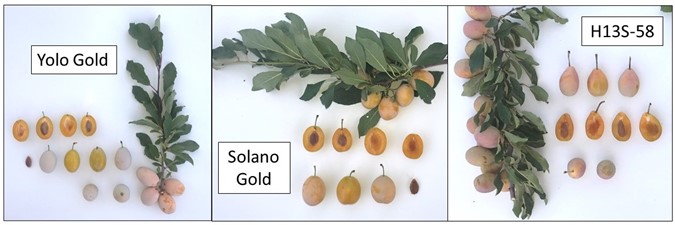Orchard Notes: January 2021
This 10 Minute Survey Could Help Protect Investments & Improve Profitability
The California Prune Board’s Production Research program is a strategic priority that aims to support useable research that lowers costs, improves prune quality, protects investments, and keeps the industry thriving well into the future.
The Board is seeking information in the areas of production research that matter most to the industry. Your responses to this survey will provide valuable input for the Crop Management & Sustainability Committee meeting on January 21st where discussions will focus on the most effective use of resources that help improve profitability.
Please complete this anonymous survey by January 13, 2021.
Take the 10-minute survey now!
Highlights from the Prune Research Workgroup
The California Prune Board (CPB) hosted a two-day production research workshop December 1-2, 2020, coordinated by the University of California Agriculture and Natural Resources. The virtual meeting shared the latest California Prune-funded projects from UC, USDA, and CSU researchers. CPB Vice Chairman and Chair of the Crop Management & Sustainability Committee, John Taylor, shared what he was most enthusiastic about following the workshop.
John Taylor: “The project that will probably have the biggest impact for the industry, is the research on new varietals. There are a few that have risen to the top and have low dry away ratios. With the current variety in the market, it is a 3:1 ratio of fresh fruit to dried fruit. Some of the new varieties have a lower ratio of around 2-2.5. While it can take some time for the industry to research and understand all the pros and cons of the new fruit varietals, a lower dry away ratio would have a positive financial impact for growers.”
 Numerous valuable topics were discussed during the workshop. Drying and pruning are two of the biggest costs for prune growers, therefore, the hedging and pruning projects that were discussed during the workshop are also relevant to cost savings.
Numerous valuable topics were discussed during the workshop. Drying and pruning are two of the biggest costs for prune growers, therefore, the hedging and pruning projects that were discussed during the workshop are also relevant to cost savings.
“I am personally very interested in the spray thinning research,” added Taylor. “If thinning can be done by spraying, which is done six weeks before traditional shaker thinning, you get that much more time for growth. Over time, this helps even out your production cycle and harvest bigger fruit. While it can be a lengthy process to adopt this method, growers can assess the timing which varies depending on weather changes and determine the best time to thin.”
The findings from these projects will inform research priorities moving forward with a focus on those that provide the highest value to the industry.
Paycheck Protection Program Round 2 Re-Opens This Week
The U.S. Small Business Administration (SBA), in consultation with the Treasury Department, announced that the Paycheck Protection Program (PPP) will re-open for new borrowers and certain existing PPP borrowers. To promote access to capital, initially, only community financial institutions will be able to make First Draw PPP Loans beginning Monday, January 11, and Second Draw PPP Loans beginning Wednesday, January 13. The PPP will open to all participating lenders shortly thereafter. Updated PPP guidance outlining Program changes to enhance its effectiveness and accessibility can be found here.